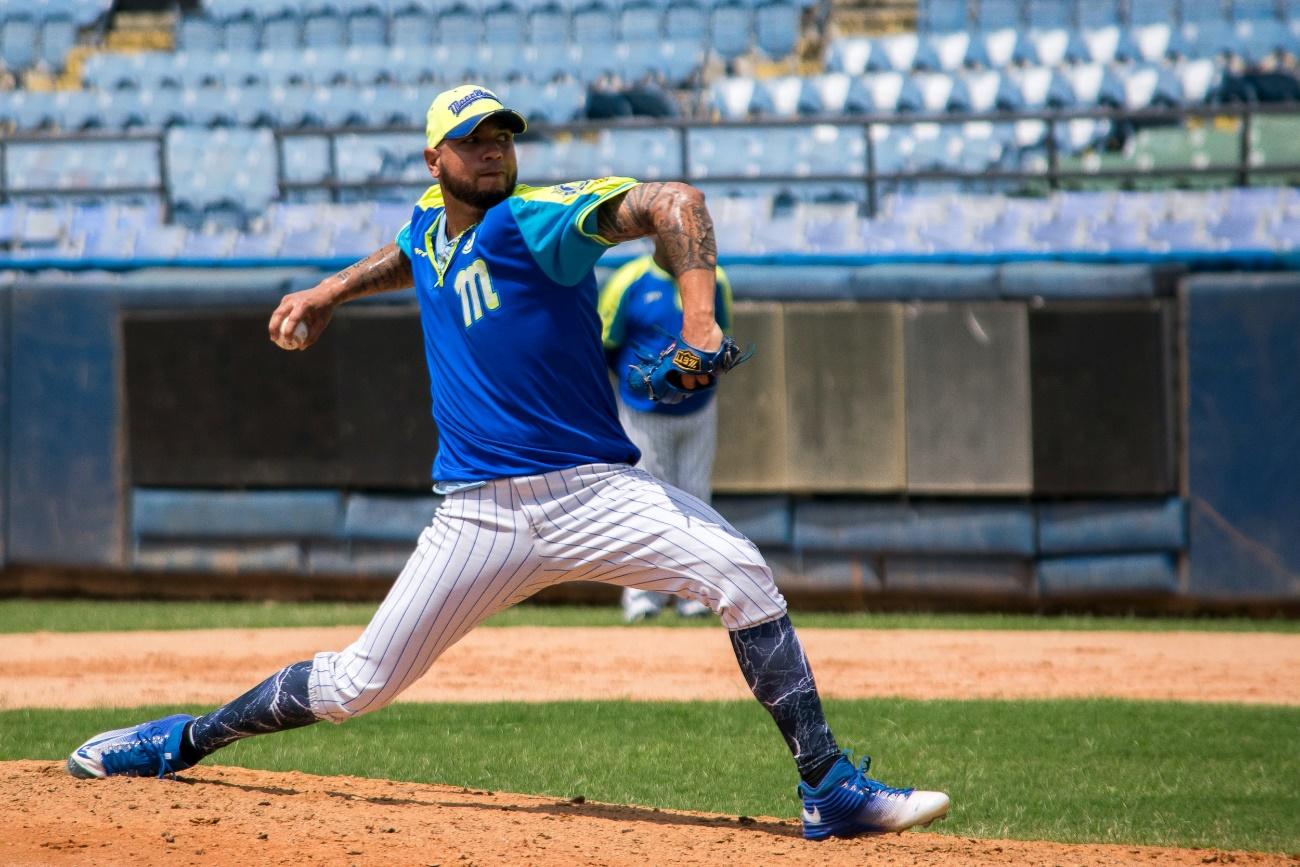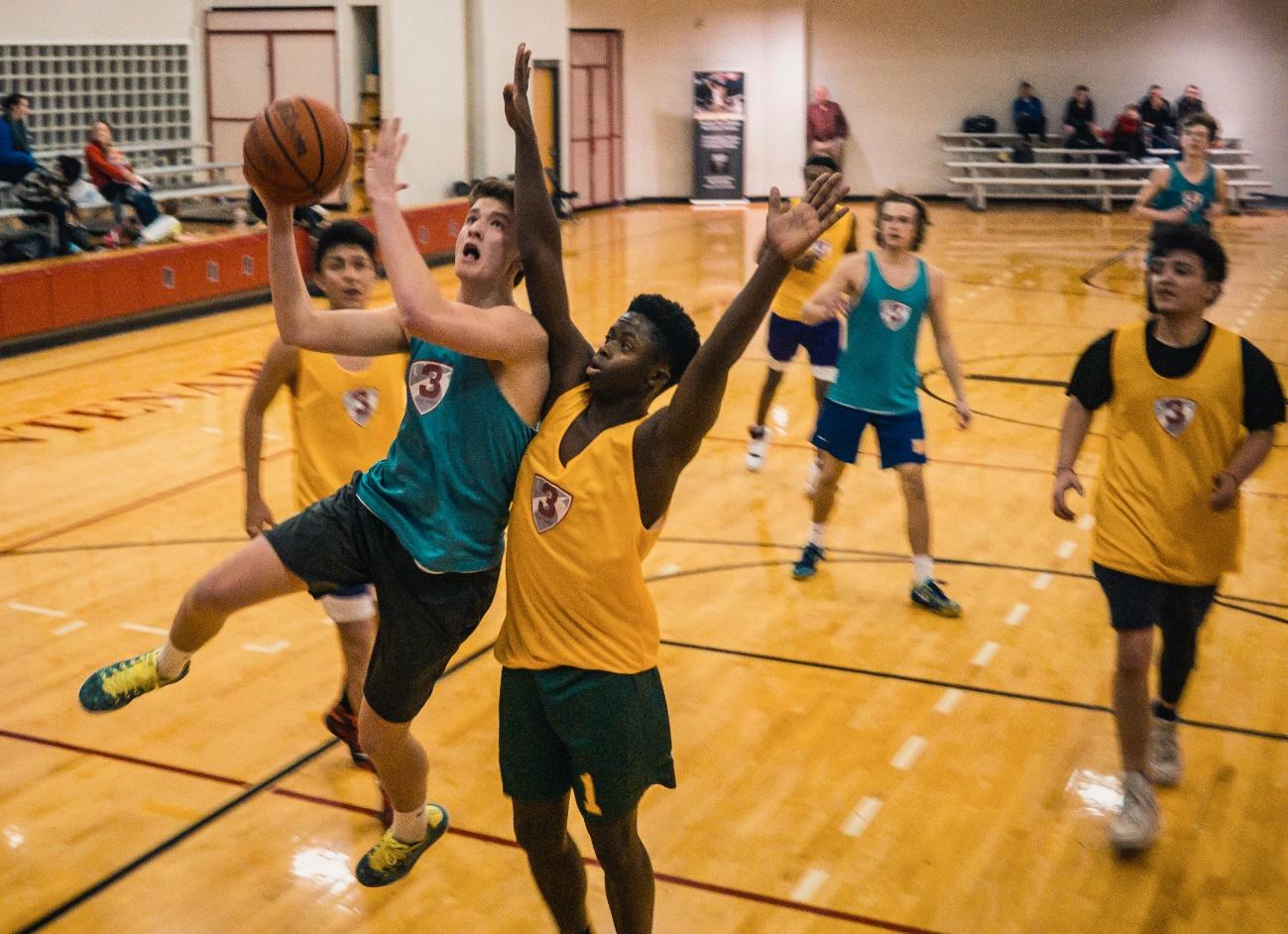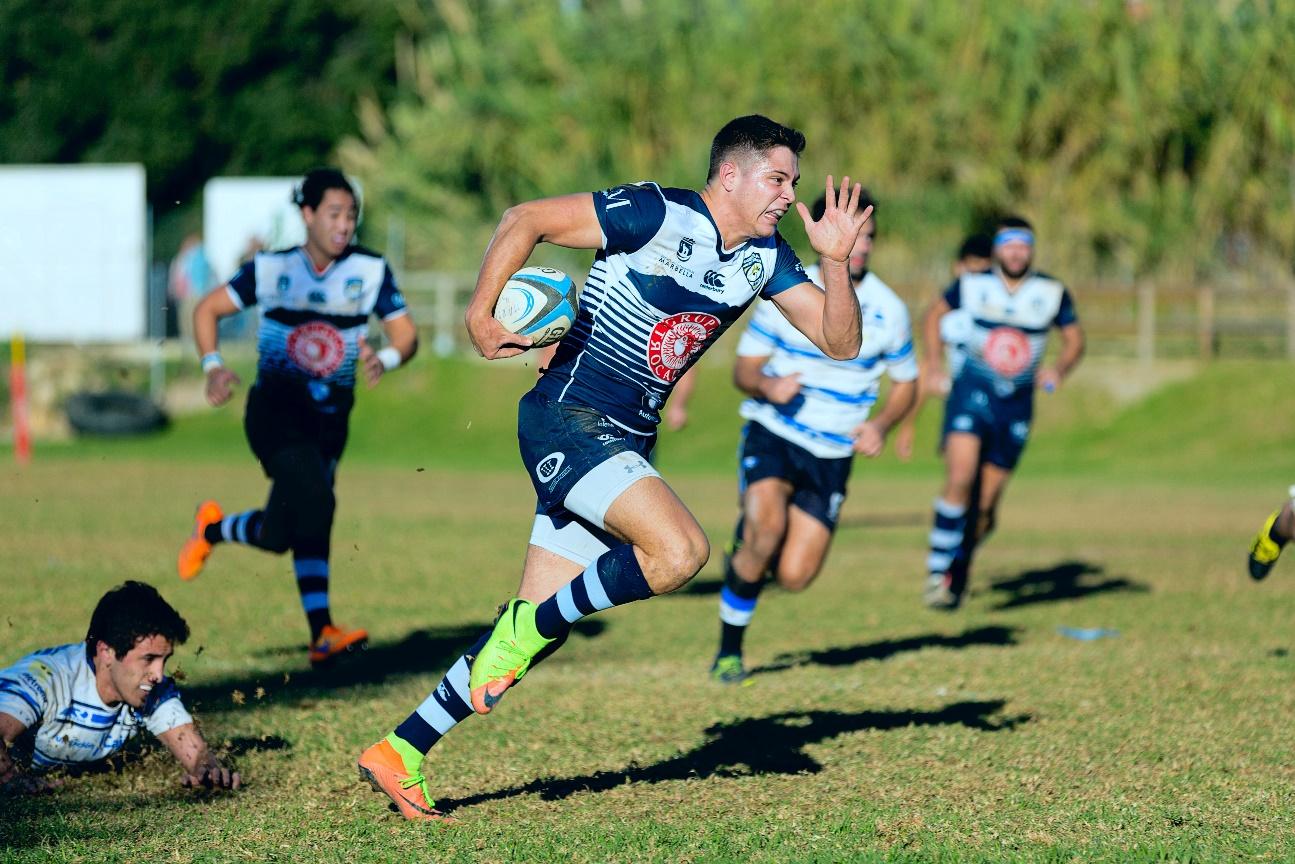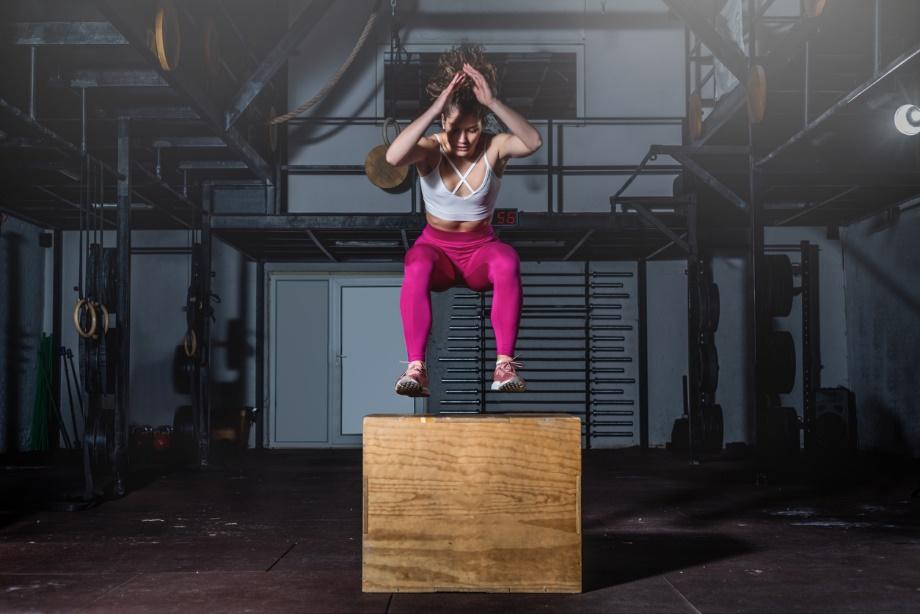27 de July de 2022
Plyometric Training: Increase Your Power
What Is Plyometric Training?

Strength and fitness specialist Vladimir Zatsiorsky was the first to introduce the word plyometrics, back in 1966. The term justifies the use of the stretching reflex with this term that etymologically comes to mean an “increase in measurement” or an “increase in length” (Commetti Gilles & Perramón, 2007).
Verkhoshansky, another of the great coaches and physiologists of the time gave visibility to this method with his triple jump athletes, discovering the importance of taking advantage of the tensions that were generated when the fall of a jump occurred. In this way he began to make jumps from more and more height so that this absorption of the impact generated more and more tension to the tissues of his athletes (Commetti Gilles & Perramón, 2007).
Plyometric training is a fast and powerful movement that includes reactive exercises in which three phases occur in the most explosive way possible: an eccentric phase when falling, a transition phase and a concentric phase to jump again. This sequence is known as the stretch-shortening cycle (CEA) (Boyle, Verstegen and Cosgrove, 2017).
We should not confuse plyometric training with other exercises in which this CEA does not occur quickly, but there is a pause between the eccentric and concentric phase. For it to be classified as plyometric training, there must be that rapid transition of these three stages in order to optimize the stretching reflex and help athletes to considerably increase power production (Boyle, 2016).
Plyometric Training Technique

Basic components of plyometric patterns
Plyometric training consists of three components that follow each other quickly: an eccentric phase where movement is stopped, a cushioning phase and a concentric phase in which we take advantage of the energy released by the stretching reflex. As we have already mentioned, the set of these three phases is called the stretch-shortening cycle.
Plyometric movements can be classified as slow or fast according to the time of contact with the ground in the case of jumps or the transition time between the eccentric and the concentric component. The slow plyometric exercise is one that lasts 251 milliseconds or more. The rapid plyometric exercise is one that lasts 250 milliseconds or less (Turner & Jeffreys, 2010).
Eccentric component
The eccentric component is also known as the deceleration phase. In this movement the muscles are stretched and accumulate elastic energy in the tissues. The previous preparation in which we bend our knees for a head jump in football or when we first take the ball back to get out of the band are two examples of this component.
Depreciation components
Between the eccentric and the concentric component there is a time in which the muscle goes from stretching and accumulating elastic energy to releasing it in the next concentric phase. The timing of this phase is vital as the elastic energy dissipates if it is extended too far. Therefore, the shorter the payback time, the more energy will be harnessed and the higher the yield will be obtained (Lloyd, Oliver, Hughes, & Williams, 2012).
Concentric component
The last component of the stretch-shorten cycle is the concentric one. This part of plyometry is where that accumulated energy is released to throw an object farther, jump more, or kick a ball faster. In this phase, the force of concentric muscle contraction is united with the energy accumulated by the stretching reflex.
Benefits of Plyometric Exercises

Plyometrics exists in all sports that require movement: a change of direction to stand out from the defender in football, bend your knees before jumping for a rebound in basketball, sprinting, etc. That is why plyometric training should be a fundamental part of sports programming.
Plyometric training improves strength in all its manifestations: speed, power, speed of change of direction, jumps, throws and kicks (Chaouachi, Othman, Hammami, Drinkwater, & Behm, 2014; RamiRez-Campillo, Andrade, & Izquierdo, 2013). Taking into account that strength is the physical quality on which others depend, plyometric exercises improve sports performance considerably.
The neurophysiological explanation is that this type of exercise improves the storage and release of the engería that occurs in the stretch-shorten cycle. Nerve reflexes, such as the stretching reflex, increase their effectiveness, along with increased motor coordination (Wilson & Flanagan, 2008).
Plyometric training also “teaches” our elastic tissues to generate more explosiveness in different work ranges. This benefit turns our limbs into springs that will do a better job than the springs of other people who do not perform plyometric training (Mcbride, Mccaulley, & Cormie, 2008).
All this as a whole causes the concentric component to be produced at a higher speed, so we will jump more and project objects further. The adaptation of the neural and musculotendinous system will be able to generate more force in less time.
In addition to performance, plyometric training also helps us reduce the number of musculotendinous injuries (Markovic & Mikulic, 2010). One of the outstanding benefits of plyometric exercises is their ability to increase bone mineral density, a fundamental aspect to avoid or limit osteoporosis (Gómez-Bruton, Matute-Llorente, González-Agüero, Casajús, & Vicente-Rodríguez, 2017).
Build explosive strength with plyometric training

Plyometric training requires high levels of strength in very short spaces of time. Plyometric exercises will not be effective if this is not taken into account and the athlete does not intend to move at maximum speed by minimizing the time between the eccentric and concentric component.
There are devices that facilitate the measurement of plyometric training, but it is one of the most difficult methods to measure since different variables such as speed and range of motion, body mass and execution with one or both limbs influence. When programming plyometric exercises we must take all this into account.
Examples of good plyometric exercises
Plyometric training requires going through different phases, an aspect that many coaches dismiss and leave aside (Boyle, 2017). The athlete must be able to land and absorb the impact first (eccentric component), before adding explosiveness (concentric component).
Once we know how to land correctly, we can add dynamic movements by increasing the number of planes and directions. Little by little we will increase the load with jumps from a height, using unilateral supports instead of bilateral or with different materials such as fences and jump drawers.
Progresión hacia Depth drop + lateral hop + box jump
This set of three exercises follows the progression discussed in the previous paragraph. First, we perform a side jump without that stretch-shorten cycle (video 1.1). We will do it only to learn how to absorb the impact. In the following exercise, the three components of the movement are performed on an easy level (video 1.2.). Finally we introduce a fall from a certain height that precedes the side jump (1.3.)
VIDEO 1.1. Lateral bound
VIDEO 1.2. Lateral bound repeat
VÍDEO 1.3. Depth drop + lateral hop + box jump
Progresión hacia medicine ball rotational throw
This time we attacked the upper body with a medicine ball throw. Following the same line above, we will progress the movement with three different exercises. The transfer of these exercises can be focused on sports such as basketball where passes and ball throws are the basis of the game.
The first exercise of the three is performed on the knees to give stability and to limit the range of motion (video 2.1.). The second exercise is executed standing up and that stretch-shorten cycle already appears (video 2.2.). Finally, a new plane of motion is introduced with the rotation (video 2.3.)
VÍDEO 2.1. Kneeling medicine ball overhead trhow
VÍDEO 2.2. Medicine ball step and overhead throw
VÍDEO 2.3. Medicine ball rotational throw
Progresión hacia Depth jump to box jump
In the first exercise we learn to absorb the blow with a low intensity (video 3.1.), while in the second exercise we do the same by implementing a fence that will make us jump higher and thereby intensify the impact (video 3.2.). In the third exercise of this sequence, plyometry does appear with continuous jumps to two legs forward (video 3.3.). In the last exercise we added extra load by jumping from a raised surface and having to jump to another elevated surface in the shortest possible support time (video 3.4.).
VÍDEO 3.1. Non-counter movement (NCM) broad jump
VÍDEO 3.2. Linear hurdle jump with stick
VÍDEO 3.3. Continous broad jump
VÍDEO 3.4. Depth jump to box jump
Increase your performance with VBT devices

Carmelo Bosco during the 1980s proposed a simple system for measuring jumps: the ergojump. This system consisted of a contact mat that measured the suspension time and the support time. With this device, coaches were able to measure the impulse qualities of athletes (Commetti Gilles & Perramón, 2007).
40 years ago, the importance of measuring plyometric training was already known, since otherwise the exercises are performed blindly without knowing if we are improving or not in said training. Currently they have greatly improved these systems of measurement of jump height, flight time and all the variables that surround plyometric and strength training.
Linear encoder allows us to emulate expensive force platforms, giving us valid and effective information to know if our programming is being useful for our athletes. In addition, it can show us if the athlete is fatigued in the warm-up of a session since, knowing what his jumping height is, we can compare with that of the current session and evaluate if he is in a position to perform the session. If his jump is well below his normal numbers, we will refer that athlete to another type of work since he has not yet recovered from the previous training or the match played (Watkins et al., 2017).
The device to measure the speed of the jump will also give us information about how many jumps are enough to program each series. If the athlete throws a jump speed of 1m/s (to say a random number) and maintains it for several jumps we can continue with the series. The moment we find that it loses a percentage of speed determined by us (30%, for example), we will stop that series. Therefore, that athlete will perform the plyometric exercise until it yields a result on the VBT device of 0.70m/s or less.
It is tremendously useful to save us the complex task of programming plyometric training, an aspect of which we have more and more information, but which is not as individualized as it is to work with a VBT device (Liao et al., 2021). If you have any questions, don’t hesitate to ask! Leave a comment or contact us here.
References
- Boyle, M. New Functional Training for Sports, 2nd ed. Champaign, IL. Human Kinetics; 2016.Clark, MA, et al. NASM Essentials of Personal Fitness Training 6th ed. Burlington, MA.
- Boyle, M., Verstegen, M. and Cosgrove, A., 2017. Advances in functional training. Aptos, USA: On Target Publications.
- Chaouachi, A., Othman, A. Ben, Hammami, R., Drinkwater, E. J., & Behm, D. G. (2014). The combination of plyometric and balance training improves sprint and shuttle run performances more often than plyometric-only training with children. Journal of Strength and Conditioning Research, 28(2), 401–412. https://doi.org/10.1519/JSC.0B013E3182987059
- Commetti Gilles, C. and Perramón, G., 2007. Manual de Pliometria. España: Paidotribo.
- Gómez-Bruton, A., Matute-Llorente, Á., González-Agüero, A., Casajús, J. A., & Vicente-Rodríguez, G. (2017). Plyometric exercise and bone health in children and adolescents: a systematic review. World Journal of Pediatrics 2017 13:2, 13(2), 112–121. https://doi.org/10.1007/S12519-016-0076-0
- Liao, K. F., Wang, X. X., Han, M. Y., Li, L. L., Nassis, G. P., & Li, Y. M. (2021). Effects of velocity based training vs. traditional 1RM percentage-based training on improving strength, jump, linear sprint and change of direction speed performance: A Systematic review with meta-analysis. PLOS ONE, 16(11), e0259790. https://doi.org/10.1371/JOURNAL.PONE.0259790
- Lloyd, R. S., Oliver, J. L., Hughes, M. G., & Williams, C. A. (2012). The effects of 4-weeks of plyometric training on reactive strength index and leg stiffness in male youths. Journal of Strength and Conditioning Research, 26(10), 2812–2819. https://doi.org/10.1519/JSC.0B013E318242D2EC
- Markovic, G., & Mikulic, P. (2010). Neuro-musculoskeletal and performance adaptations to lower-extremity plyometric training. Sports Medicine, 40(10), 859–895. https://doi.org/10.2165/11318370-000000000-00000/FIGURES/TAB5
- Mcbride, J. M., Mccaulley, G. O., & Cormie, P. (2008). Influence of preactivity and eccentric muscle activity on concentric performance during vertical jumping. Journal of Strength and Conditioning Research, 22(3), 750–757. https://doi.org/10.1519/JSC.0B013E31816A83EF
- RamiRez-Campillo, R., Andrade, D. C., & Izquierdo, M. (2013). Effects of plyometric training volume and training surface on explosive strength. Journal of Strength and Conditioning Research, 27(10), 2714–2722. https://doi.org/10.1519/JSC.0B013E318280C9E9
- Turner, A. N., & Jeffreys, I. (2010). The stretch-shortening cycle: Proposed mechanisms and methods for enhancement. Strength and Conditioning Journal, 32(4), 87–99. https://doi.org/10.1519/SSC.0B013E3181E928F9
- Watkins, C. M., Barillas, S. R., Wong, M. A., Archer, D. C., Dobbs, I. J., Lockie, R. G., … Brown, L. E. (2017). Determination of Vertical Jump as a Measure of Neuromuscular Readiness and Fatigue. Journal of Strength and Conditioning Research, 31(12), 3305–3310. https://doi.org/10.1519/JSC.0000000000002231
- Wilson, J. M., & Flanagan, E. P. (2008). The role of elastic energy in activities with high force and power requirements: a brief review. Journal of Strength and Conditioning Research, 22(5), 1705–1715. https://doi.org/10.1519/JSC.0B013E31817AE4A7

